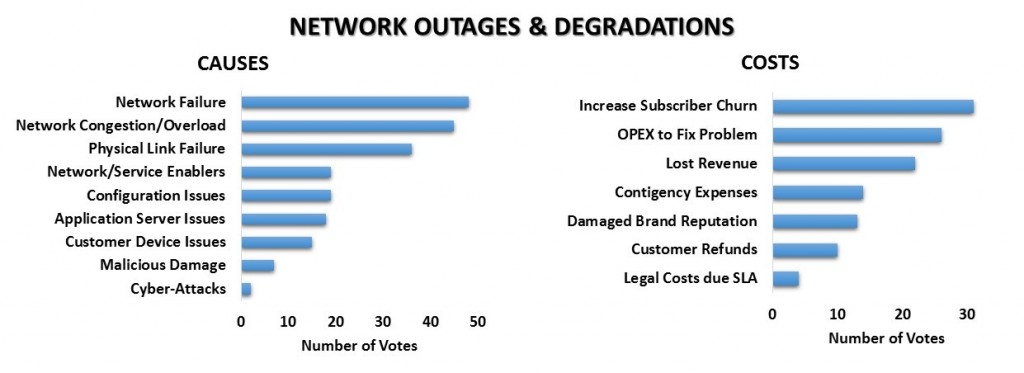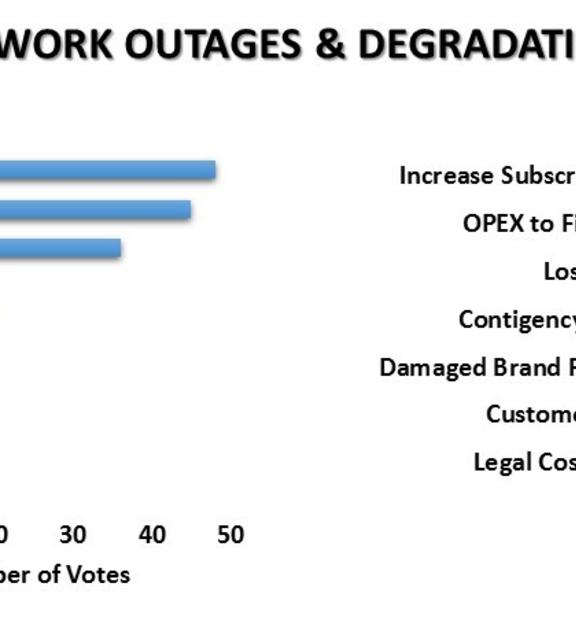In this series, we've gone out of our way to emphasize just how important it is for mobile operators to assure mobile backhaul performance. While we've taken an in-depth look at the complexities of backhaul assurance in relation to the evolution of mobile networks, we still need to discuss how a unified mobile backhaul solution could affect revenue streams for mobile operators as networks continue to grow and evolve.
Customer retention is imperative for mobile operators today as the market is more competitive than ever. Recent reports have shown that mobile operators need to rely on their service advantages to grow — or at the very least maintain — their customer base given the current climate of the mobile market. Service degradations and failures due to congestion and other factors have the strongest impact on customers — and poor quality of experience (QoE) can contribute to debilitating subscriber churn if not addressed.
 A 2013 survey conducted by Heavy Reading, “Mobile Network Outages and Service Degradations,” found that mobile operators by and large agree with this sentiment and consider network performance factors to be the largest contributor to subscriber churn. A similar survey conducted in 2016 by Heavy Reading found that service outages and degradations cost mobile operators more than $20 billion annually.
A 2013 survey conducted by Heavy Reading, “Mobile Network Outages and Service Degradations,” found that mobile operators by and large agree with this sentiment and consider network performance factors to be the largest contributor to subscriber churn. A similar survey conducted in 2016 by Heavy Reading found that service outages and degradations cost mobile operators more than $20 billion annually.
This requires that mobile operators adopt a unified performance solution to manage mobile backhaul and other network domains that can help mitigate losses for mobile operators — and ultimately reduce subscriber churn by enhancing QoE.
The ROI for Mobile Backhaul Assurance is Easy to Justify
Churn reduction is the main quantifiable factor a unified performance management solution can implement to help the operator bottom-line — refer to our whitepaper for more illustrative numbers — but it is not the only one. This solution would can also help prevent direct revenue loss by ensuring better network availability. This will decrease the occurrence of lost billable voice minutes and data for subscribers: As long as the network is available and operating, subscriber revenue can pour in uninterrupted.
Furthermore, focusing on ensuring performance can also result in a number of direct and indirect CAPEX and OPEX gains for mobile operators. For starters, they can reduce the number of OSS tools and their associated operational and maintenance costs. The same can be said of network troubleshooting, since there will be less need for operators to conduct activities like field tests to ensure network performance.
A better performing network will also lead to less regulatory intervention that comes with severe or widespread service outages or degradations. This will result in fewer regulatory fines and less dependency upon financial provisions reserved by mobile operators to deal with this kind of fallout.
Prioritizing mobile backhaul can also help give the visibility needed to right-size the network for better allocation of CAPEX, which includes the ability to identify parts of the network that are — or will be — over- or underutilized. This helps guarantee capital protection by investing in a long-term strategic platform that evolves and supports all current and future networks.
In our whitepaper “Mobile Backhaul Performance Management — Challenges, Requirements, Benefits and ROI,” we highlight a detailed strategy that mobile operators can work with to implement a unified performance solution that assures backhaul to prevent customer churn. By ranking the impact of different factors that contribute to churn, the whitepaper outlines scenarios that help quantify savings and returns on investment into mobile backhaul. Once you see the stats, it's hard not to justify prioritizing mobile backhaul performance management given the current climate of the mobile market.
Stay tuned for more!










